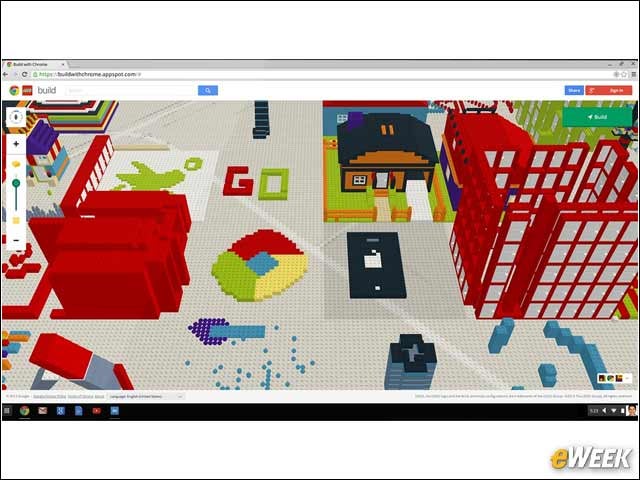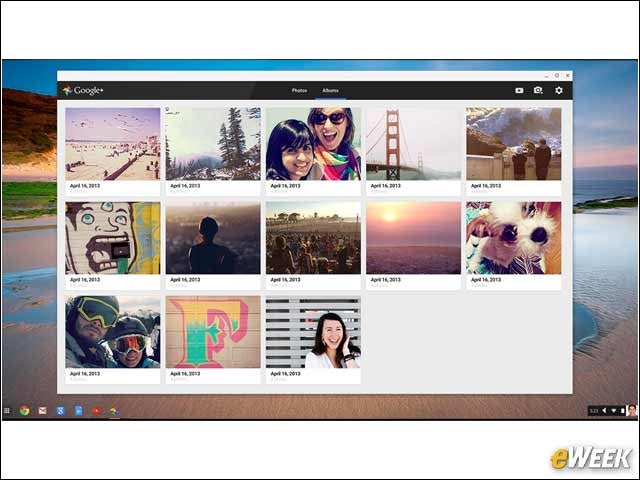eWEEK content and product recommendations are editorially independent. We may make money when you click on links to our partners. Learn More.
2Chrome OS Is All About Web Applications
The central component in Google’s Chrome OS is the Internet. In fact, the entire operating system is based on the idea that the Web is the best operating system there is and that Web pages are really micro applications that people can use for business or entertainment. It’s a feature that plays a crucial role in the entire Chrome OS experience.
3But Users Can Run Their Chrome OS Devices Offline
4You Won’t Pay for Updates (and They’re Downloaded Automatically)
Updates for Chrome OS don’t come out as prepackaged, named upgrades like they do in Windows and OS X. Instead, Google simply updates Chrome OS on an ongoing basis and does so automatically so the latest features are always running on the owner’s device. Updates are hands-off, and that appeals to the IT department that worries about security holes that open when software isn’t updated, making applications and data vulnerable to attacks on unpatched platforms.
5Google Boasts About Its Security
Google has made a fuss about the security of Chrome OS, and perhaps for good reason. For one thing, Google relies on the community to comb through the Chrome OS code and find bugs. The company then provides a financial incentive for finding those flaws. It also implements the fixes immediately. In addition, since Chrome OS is not nearly as big of a target as Android or Windows, so far fewer hackers are targeting the operating system. That situation may change, and no OS is entirely free of security flaws. But Google is trying to make Chrome OS as secure as it can.
6The Software Is Optimized for Battery Life
Google’s Chrome OS is optimized to maximize battery life on Chromebooks—notebooks running the company’s operating system. Part of the reason Chromebooks have such a strong battery life is that the operating system is lightweight and not resource-intensive, since most users access apps running on the Web. Chromebook owners generally are using the device for tasks that require less battery help.
7Expect Data Synchronization Across Android Devices
Customers who own both an Android handset and a Chrome OS-based product will find that all of their work and information are synchronized across devices through their Google account. That allows them to pick up where they left off on each device without losing anything. It’s a neat feature that comes in handy for Android users.
8You Must Have a Google Account to Access Cloud Apps
9Chromebooks Provide Multi-Account Support
Chromebooks come with multi-account support. So, if a person with one Google account wants to use a Chrome OS device, they’ll be able to sign on and access all available Google Apps and data stored in the cloud. Once that user logs off, another person with their own Google account can use the same device to access their data and apps online through their own username. Since these users access their accounts through separate passwords, there should be no data leakage between accounts.
10Product Designs Are Quite Nice
Although Chromebooks were once little more than experimental prototypes that had little aesthetic appeal, that has changed in recent years. Several Chromebooks come with a nice design. There are also several different device types, including a desktop version, called a Chromebox, and an all-in-one. There is no shortage of high-quality, good-looking Chrome OS devices.
11Chrome OS Product Pricing Can’t Be Beaten
There is no beating the price on Chrome OS devices. Some of the products running Chrome OS start at $149 and work just fine for most applications. Other nicely equipped Chromebooks cost customers under $300. Only the Chromebook Pixel, the highest-end Chrome OS-based device on the market, breaks the mold at a starting price of $999. Customers on a budget will find a winner in Chromebooks.










